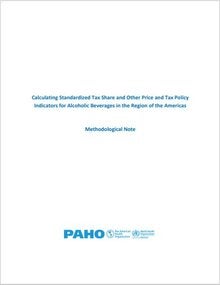The World Health Organization (WHO) Global Action Plan for the Prevention and Control of Noncommunicable Diseases 2013–2030 (WHO Global Action Plan) recognizes the critical importance of reducing the level of exposure of individuals and populations to common risk factors of noncommunicable diseases (NCDs), including harmful use of alcohol. It particularly recommends taxing alcoholic beverages as one of the most cost-effective regulatory policies to prevent NCDs, as does the WHO Global Alcohol Action Plan 2022-2030. Indeed, harmful use of alcohol is associated with hundreds of health conditions and injuries, acute and chronic. Taxes on alcoholic beverages represent a triple win for governments, because they 1) improve population health, 2) generate revenue, and 3) have the potential to reduce long-term associated healthcare costs and productivity losses. While since 2008, WHO has monitored tobacco taxes and prices with standardized quantitative indicators, including the comparison of tobacco tax share levels across all Member States and time, comparable information on taxation of alcoholic beverages over time and across countries is not currently available. Such monitoring is important for analyzing trends, enabling standardized comparisons across countries, establishing best practices, and providing a powerful tool for advocacy. The Pan American Health Organization (PAHO) is committed to providing Member States with accurate, relevant, and internationally comparable information that they can use to guide the development of policy and to evaluate the impact of measures to prevent the harmful use of alcohol. This note describes the methodology that PAHO developed for estimating a tax share indicator and other tax policy and price indicators for alcoholic beverages, based on the methodology used by WHO to monitor prices and taxes applied on tobacco products. It outlines the definition of the scope and beverages for which the tax share is calculated; a description of the data collection and analysis process; and an explanation of key components of the tax share calculation. It also defines additional indicators on prices, affordability, and tax policies.
|

